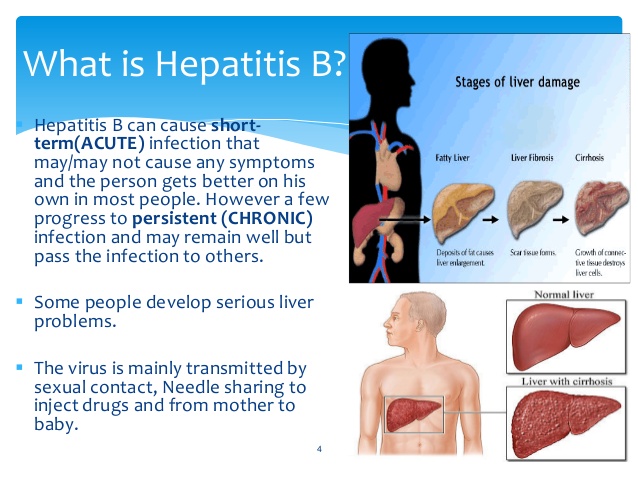Worst hepatitis to have. Understanding Hepatitis A, B, and C: Symptoms, Transmission, and Treatment Options
What are the main differences between hepatitis A, B, and C. How are these viral infections transmitted. What are the symptoms and treatment options for each type of hepatitis. Is one form of hepatitis more severe than the others.
Overview of Hepatitis Types: A, B, and C
Hepatitis is a condition characterized by inflammation of the liver, often caused by viral infections. The three most common types of viral hepatitis in the United States are hepatitis A, B, and C. Each type is caused by a different virus and has distinct characteristics in terms of transmission, symptoms, and long-term effects.
Understanding the differences between these types of hepatitis is crucial for proper diagnosis, treatment, and prevention. Let’s explore each type in detail to gain a comprehensive understanding of their unique features and potential impacts on health.
Hepatitis A: The Acute Infection
Hepatitis A is caused by the hepatitis A virus (HAV) and is typically an acute, short-term infection. It is highly contagious and spreads primarily through the fecal-oral route, often through contaminated food or water.

Transmission and Risk Factors
- Consuming contaminated food or water
- Close contact with an infected person
- Poor sanitation and hygiene practices
- Travel to areas with high HAV prevalence
Symptoms and Duration
Symptoms of hepatitis A usually appear 2-6 weeks after exposure and may include:
- Fever
- Fatigue
- Nausea and vomiting
- Abdominal pain
- Loss of appetite
- Jaundice (yellowing of the skin and eyes)
Most people recover completely from hepatitis A within a few weeks to months without any long-term liver damage.
Treatment and Prevention
There is no specific treatment for hepatitis A, as the infection typically resolves on its own. Management focuses on supportive care, including rest, proper nutrition, and avoiding alcohol. Prevention is key, with vaccination being the most effective method. The hepatitis A vaccine is recommended for children and high-risk adults.
Hepatitis B: Acute and Chronic Possibilities
Hepatitis B is caused by the hepatitis B virus (HBV) and can manifest as both acute and chronic infections. It is transmitted through contact with infected blood, semen, and other body fluids.

Transmission and Risk Factors
- Unprotected sexual contact with an infected person
- Sharing needles or other drug paraphernalia
- Mother-to-child transmission during childbirth
- Accidental needle sticks in healthcare settings
- Sharing personal items like razors or toothbrushes with an infected person
Acute vs. Chronic Hepatitis B
Acute hepatitis B occurs within the first 6 months of HBV infection. Many adults with acute hepatitis B recover completely. However, some individuals, especially those infected as infants or young children, may develop chronic hepatitis B, which can last a lifetime and lead to serious liver complications.
Symptoms and Complications
Symptoms of acute hepatitis B may include:
- Fatigue
- Fever
- Joint pain
- Abdominal pain
- Loss of appetite
- Nausea and vomiting
- Jaundice
Chronic hepatitis B may be asymptomatic for years but can lead to serious complications such as cirrhosis, liver failure, and hepatocellular carcinoma.
Treatment and Prevention
Acute hepatitis B typically doesn’t require specific treatment beyond supportive care. For chronic hepatitis B, antiviral medications may be prescribed to suppress viral replication and prevent liver damage. Regular monitoring is essential for those with chronic infections.

Prevention strategies include vaccination, practicing safe sex, and avoiding sharing needles or personal items that may come into contact with blood.
Hepatitis C: The Silent Epidemic
Hepatitis C is caused by the hepatitis C virus (HCV) and is often referred to as a “silent epidemic” due to its ability to progress without noticeable symptoms for years. It primarily spreads through contact with infected blood.
Transmission and Risk Factors
- Sharing needles or other drug paraphernalia
- Receiving blood transfusions or organ transplants before 1992 (in the United States)
- Mother-to-child transmission during childbirth (less common)
- Unprotected sexual contact with an infected person (less common)
- Unsafe medical procedures or poorly sterilized tattoo equipment
Acute vs. Chronic Hepatitis C
While some people clear the virus spontaneously within 6 months (acute hepatitis C), a majority (up to 85%) develop chronic hepatitis C. This long-term infection can silently damage the liver over decades.

Symptoms and Complications
Acute hepatitis C often goes unnoticed due to mild or absent symptoms. When present, symptoms may include:
- Fatigue
- Fever
- Nausea
- Abdominal pain
- Loss of appetite
- Jaundice (less common)
Chronic hepatitis C can lead to serious liver complications, including cirrhosis, liver failure, and hepatocellular carcinoma.
Treatment and Prevention
Significant advances in hepatitis C treatment have been made in recent years. Direct-acting antivirals (DAAs) can cure most cases of hepatitis C with a short course of oral medication. However, early detection is crucial for optimal treatment outcomes.
Prevention focuses on avoiding exposure to infected blood, as there is currently no vaccine available for hepatitis C.
Comparing the Severity: Which Hepatitis is Worse?
Determining which type of hepatitis is “worse” depends on various factors, including the likelihood of chronic infection, potential complications, and available treatments. Here’s a comparative analysis:
Hepatitis A
- Generally considered the least severe
- Almost always acute and self-limiting
- Rarely causes long-term liver damage
- Effective vaccine available
Hepatitis B
- Can be both acute and chronic
- Risk of chronic infection higher when acquired at a young age
- Can lead to serious liver complications if chronic
- Effective vaccine available
- Treatments available for chronic infection
Hepatitis C
- Often considered the most concerning due to its tendency to become chronic
- High risk of developing into a chronic infection (up to 85%)
- Can silently progress to severe liver damage over decades
- No vaccine available
- Highly effective treatments now available, but early detection is crucial
While hepatitis C is often regarded as the most severe due to its high chronicity rate and potential for silent progression, all forms of hepatitis can have serious health implications if left untreated or unmanaged.

Diagnosis and Testing for Hepatitis
Accurate diagnosis is crucial for proper management of hepatitis. Various tests are used to identify and differentiate between hepatitis A, B, and C.
Blood Tests
Blood tests are the primary method for diagnosing hepatitis. These may include:
- Liver function tests to assess liver damage
- Viral hepatitis serologies to detect specific antibodies or antigens
- Viral load tests to measure the amount of virus in the blood
Imaging Studies
Imaging techniques such as ultrasound, CT scans, or MRI may be used to assess liver damage or identify complications like cirrhosis or liver cancer.
Liver Biopsy
In some cases, a liver biopsy may be recommended to determine the extent of liver damage or to guide treatment decisions, particularly in chronic hepatitis B or C.
Prevention Strategies for Hepatitis
Preventing hepatitis is crucial for individual and public health. Here are some key strategies for each type:
Hepatitis A Prevention
- Vaccination (highly effective and recommended for children and high-risk adults)
- Practicing good hygiene, especially handwashing
- Avoiding contaminated food and water, particularly when traveling to high-risk areas
Hepatitis B Prevention
- Vaccination (recommended for all infants at birth and for unvaccinated adults)
- Practicing safe sex
- Avoiding sharing needles or personal items that may come into contact with blood
- Following universal precautions in healthcare settings
Hepatitis C Prevention
- Avoiding sharing needles or other drug paraphernalia
- Ensuring safe medical and dental procedures
- Practicing safe sex, especially for those with multiple partners
- Avoiding sharing personal items that may come into contact with blood
Public health initiatives, including education, vaccination programs, and harm reduction strategies, play a crucial role in preventing the spread of viral hepatitis.

Living with Chronic Hepatitis: Management and Quality of Life
For individuals living with chronic hepatitis B or C, proper management is essential for maintaining health and preventing complications. Here are some key aspects of living with chronic hepatitis:
Regular Medical Monitoring
- Periodic liver function tests and viral load measurements
- Routine screening for liver cancer in high-risk individuals
- Regular check-ups with a hepatologist or gastroenterologist
Lifestyle Modifications
Adopting a healthy lifestyle can help support liver health:
- Avoiding alcohol and tobacco
- Maintaining a balanced diet rich in fruits, vegetables, and whole grains
- Engaging in regular physical activity
- Managing weight to prevent fatty liver disease
Emotional and Psychological Support
Living with chronic hepatitis can be emotionally challenging. Support groups and counseling can be beneficial for coping with the psychological aspects of the disease.
Preventing Transmission
Individuals with chronic hepatitis should take precautions to prevent transmitting the virus to others, including practicing safe sex and avoiding sharing personal items that may come into contact with blood.

With proper management and the advanced treatments now available, many people with chronic hepatitis can lead full, productive lives and significantly reduce their risk of serious liver complications.
Which Hepatitis is the Worst? A Comprehensive Guide to Understanding the Different Types
Hepatitis is a viral infection that affects the liver. There are five different types of hepatitis: A, B, C, D, and E. Each type is caused by a different virus and has different symptoms and treatments. In this blog post, we’ll take a closer look at each type of hepatitis and discuss which one is the most dangerous.
Hepatitis A
Hepatitis A is a highly contagious virus that spreads through contaminated food or water. Symptoms include fever, fatigue, nausea, and jaundice. Most people recover from hepatitis A without any long-term effects. However, in rare cases, it can lead to liver failure and death.
Hepatitis B
Hepatitis B is spread through contact with infected blood or bodily fluids. Symptoms include fatigue, joint pain, and jaundice. Most people recover from hepatitis B, but some develop chronic hepatitis B, which can lead to liver damage and liver cancer.
Hepatitis C
Hepatitis C is spread through contact with infected blood. Symptoms include fatigue, joint pain, and jaundice. Most people with hepatitis C develop chronic hepatitis C, which can lead to liver damage and liver cancer. Hepatitis C is the most dangerous type of hepatitis because it often goes undiagnosed and untreated until it has caused significant liver damage.
Symptoms include fatigue, joint pain, and jaundice. Most people with hepatitis C develop chronic hepatitis C, which can lead to liver damage and liver cancer. Hepatitis C is the most dangerous type of hepatitis because it often goes undiagnosed and untreated until it has caused significant liver damage.
Hepatitis D
Hepatitis D is a rare form of hepatitis that only occurs in people who are already infected with hepatitis B. Symptoms are similar to those of hepatitis B, but the disease is more severe and can lead to liver failure.
Hepatitis E
Hepatitis E is spread through contaminated food or water. Symptoms include fever, fatigue, and jaundice. Most people recover from hepatitis E without any long-term effects. However, in rare cases, it can lead to liver failure and death.
Conclusion
While all types of hepatitis can be dangerous, hepatitis C is the most concerning because it often goes undiagnosed and untreated until it has caused significant liver damage. If you think you may have been exposed to hepatitis, it’s important to get tested and treated as soon as possible. Nao Medical offers comprehensive testing and treatment for hepatitis, as well as other urgent care, primary care, multi-speciality care, mental health, women’s health, and nutrition services. Book an appointment today to take control of your health.
If you think you may have been exposed to hepatitis, it’s important to get tested and treated as soon as possible. Nao Medical offers comprehensive testing and treatment for hepatitis, as well as other urgent care, primary care, multi-speciality care, mental health, women’s health, and nutrition services. Book an appointment today to take control of your health.
FAQs
What are the symptoms of hepatitis?
The symptoms of hepatitis vary depending on the type of virus. Common symptoms include fatigue, nausea, jaundice, and joint pain.
How is hepatitis treated?
Treatment for hepatitis depends on the type of virus and the severity of the infection. Treatment may include antiviral medications, rest, and a healthy diet.
Can hepatitis be prevented?
Yes, hepatitis can be prevented through vaccination, practicing safe sex, and avoiding contact with infected blood or bodily fluids.
Disclaimer: The information presented in this article is intended for general informational purposes only and should not be considered, construed or interpreted as legal or professional advice, guidance or opinion.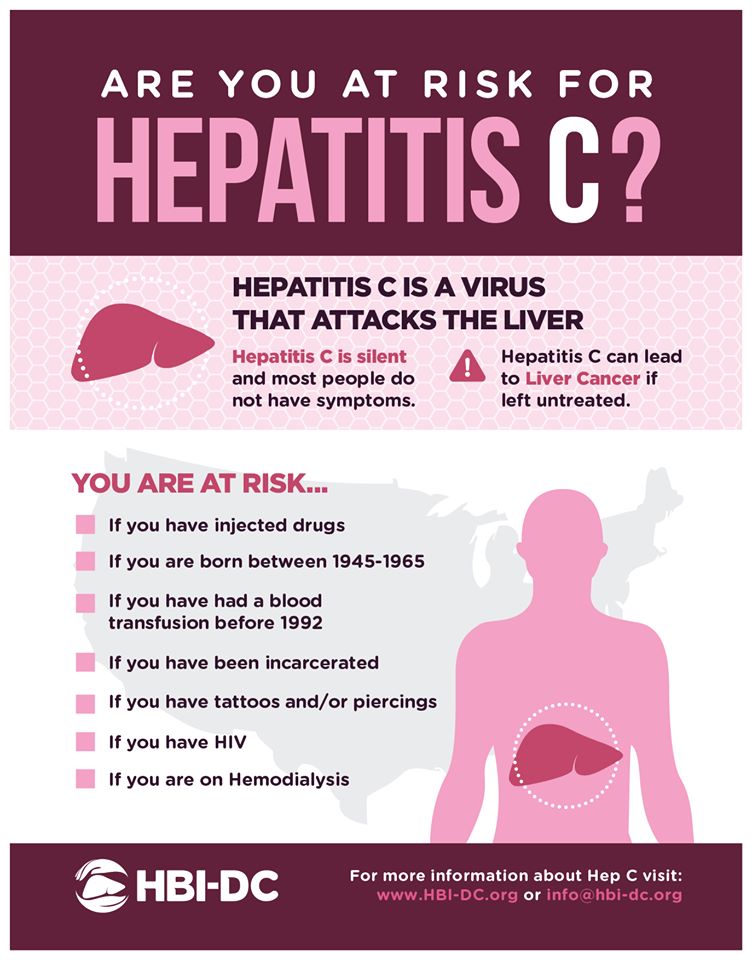
What to Know About Each Type
Hepatitis is a condition that occurs when your liver becomes inflamed. There are several things that can cause hepatitis, including viral infections, autoimmune conditions, and heavy alcohol use.
Many times, hepatitis is caused by a virus. When this happens, it’s called viral hepatitis. The most common types of viral hepatitis in the United States are:
- hepatitis A
- hepatitis B
- hepatitis C
These forms of hepatitis are each caused by a different virus and are spread in different ways. Some infections caused by these viruses may only last a short amount of time (acute), while others may be long-lasting (chronic).
In this article, we’ll break down the differences between hepatitis A, B, and C in greater detail.
Viral hepatitis is a condition that causes inflammation of your liver. When a hepatitis virus enters your body, it travels to the liver. It can then enter liver cells (hepatocytes) and begin to replicate, making more of itself.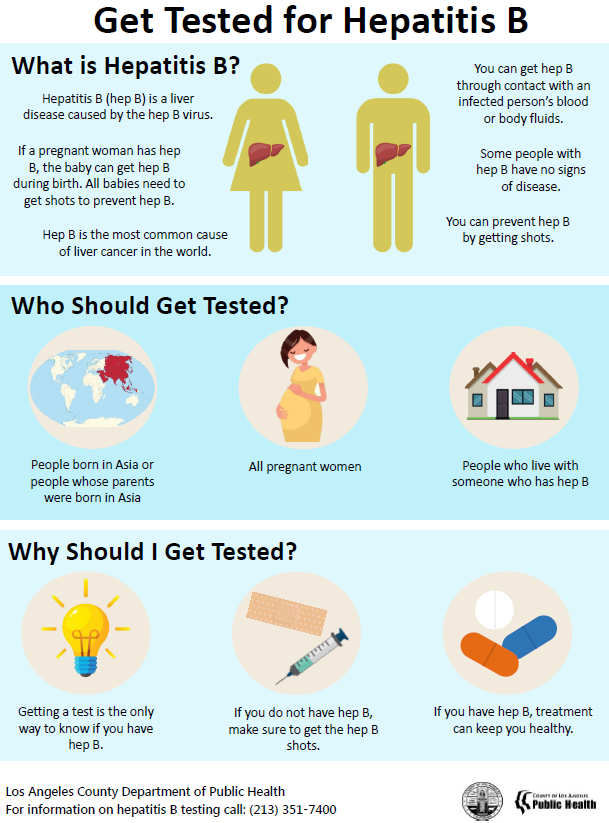
The activity of the virus can cause damage to your liver cells. Immune cells begin to travel to your liver to fight the infection. This can also contribute to inflammation.
Liver damage and inflammation can affect your liver’s ability to function, which can in turn affect your overall health. This is because your liver has several important functions for your body, including:
- breaking down or filtering various substances in the body, such as drugs and toxins
- producing bile, which is important for digestion
- making important blood proteins, including those that help your blood to clot
- storing additional blood sugar (glucose) as glycogen, which can be used for energy later
- synthesizing immune system factors that are important for fighting infections
The symptoms of hepatitis A, B, and C are all fairly similar. They may include:
- fever
- fatigue
- pain in the upper right area of your abdomen
- joint pain
- nausea or vomiting
- diarrhea (usually only with hepatitis A)
- loss of appetite
- yellowing of the skin or eyes (jaundice)
- dark urine
- pale, clay-colored stool
However, it’s possible to contract viral hepatitis and not have any noticeable symptoms. Because of this, some people are unaware that they have viral hepatitis.
Because of this, some people are unaware that they have viral hepatitis.
Hepatitis A is caused by the hepatitis A virus (HAV) and has become relatively uncommon in the United States. According to the Centers for Disease Control and Prevention (CDC), there were only about 24,900 hepatitis A infections in the United States in 2018.
Areas of the world where hepatitis A is more common include certain parts of:
- Africa
- Asia
- Central and South America
- Eastern Europe
How do you get it?
HAV can be present in the stool (poop) and blood of someone with the virus. It’s mainly transmitted through the fecal-oral route, which involves ingesting virus that’s present in the stool of someone with hepatitis A.
There are several ways you can get hepatitis A:
- having close person-to-person contact with someone who has hepatitis A, such as:
- taking care of someone who’s currently sick
- having sex with someone who has the virus
- consuming contaminated food or drink, including:
- eating food that’s been prepared by someone with hepatitis A who didn’t wash their hands after using the bathroom
- drinking untreated, infected water
- eating food that’s been washed or prepared using untreated water
- eating undercooked shellfish that was sourced from sewage-contaminated water
- having contact with contaminated objects, such as toilets and diaper changing areas and then not washing your hands
How does it affect the body?
The incubation period for hepatitis A can be between 15 and 50 days (the average is 28 days). After this time, you may experience symptoms. Unlike hepatitis B and C, hepatitis A only causes an acute or short-term illness.
After this time, you may experience symptoms. Unlike hepatitis B and C, hepatitis A only causes an acute or short-term illness.
What are the risk factors?
Some people are at an increased risk for contracting HAV, including:
- people traveling to areas of the world where hepatitis A is common
- men who have sex with men
- people who use injectable or noninjectable drugs
- caregivers for those who have hepatitis A
- people who are experiencing homelessness
- people living with a child who’s been adopted from an area where hepatitis A is common
How is it treated?
Hepatitis A is treated using supportive methods. These can include things like rest, fluids, and healthy foods. Medications can also help to ease some symptoms like fever, aches, and pains.
There’s a vaccine available to protect against infection with HAV. This is typically recommended for children as well as for people at an increased risk for contracting the virus.
Also, receiving a single dose of the hepatitis A vaccine may prevent you from becoming ill if you’ve been exposed to HAV. For it to be effective, the vaccine needs to be given within 2 weeks of exposure.
What is the outlook?
Most people with hepatitis A recover without any complications. Once you’ve had hepatitis A, you can’t get it again. Antibodies to the virus will protect you for life.
Some people may be at an increased risk for serious illness from hepatitis A. These include:
- older adults
- people living with HIV
- people who already have liver disease
Hepatitis B is caused by the hepatitis B virus (HBV). The CDC estimates that there were about 21,600 acute hepatitis B infections in the United States in 2018.
How do you get it?
You can contract HBV by coming into contact with the blood or bodily fluids of someone with hepatitis B. This can happen by:
- having sex with someone with hepatitis B
- sharing injectable drug equipment
- being born to a mother with hepatitis B
- having direct contact with blood or open sores of someone with hepatitis B
- getting accidental injuries, such as needle sticks or sharps injuries
- sharing personal items that may come into contact with blood or other bodily fluids, such as razors, toothbrushes, or nail clippers
How does it affect the body?
The incubation period for hepatitis B can range from 60 to 150 days (90 days on average). However, not everyone who has acute hepatitis B will experience symptoms.
However, not everyone who has acute hepatitis B will experience symptoms.
About 95 percent of adults completely recover from hepatitis B. However, hepatitis B can also become chronic.
The risk of chronic hepatitis B is greatest in those who were exposed to HBV as young children. Many people with chronic hepatitis B don’t have symptoms until significant liver damage has occurred.
In some people who’ve had hepatitis B, the virus can reactivate later on. When this happens, symptoms and liver damage may occur. People with a weakened immune system and those being treated for hepatitis C are at a higher risk for HBV reactivation.
What are the risk factors?
The groups at an increased risk of contracting HBV are:
- sexual partners of someone with hepatitis B
- men who have sex with men
- infants born to a mother with hepatitis B
- people who use injectable drugs
- those with an increased risk for occupational exposure to HBV, such as healthcare workers
- people receiving dialysis
How is it treated?
Similarly to hepatitis A, acute hepatitis B is typically treated using supportive measures. Antiviral medications are available for people with chronic hepatitis B. Some examples of these medications include:
Antiviral medications are available for people with chronic hepatitis B. Some examples of these medications include:
- entecavir (Baraclude)
- tenofovir alafenamide (Vemlidy)
- tenofovir disoproxil fumarate (Viread)
People with chronic hepatitis B will need to be monitored by a healthcare professional. This is necessary to detect any signs of liver damage or liver cancer.
A vaccine is available for hepatitis B. It’s typically given to all infants, children, and teens in the United States. Vaccination is also recommended for adults who are at a higher risk for contracting HBV.
What is the outlook?
The symptoms of acute hepatitis B can last for weeks to months and are often mild. More serious illness can happen in older adults.
Having chronic hepatitis B can increase your risk for developing cirrhosis or liver cancer. However, when HBV is diagnosed and treated early, the chances of serious complications are lower.
According to the CDC, about 862,000 people in the United States were living with chronic hepatitis B in 2016. The condition contributed to a total of 1,649 deaths in the United States in 2018.
The condition contributed to a total of 1,649 deaths in the United States in 2018.
Hepatitis C is caused by the hepatitis C virus (HCV). The CDC estimates that about 50,300 new acute hepatitis C infections occurred in the United States in 2018.
How do you get it?
HCV is transmitted by blood and bodily fluids that can contain blood. Some of the ways that you can contract HCV include:
- sharing injectable drug equipment
- being born to a mother with hepatitis C
- having sex with someone who has hepatitis C
- getting a piercing or tattoo with equipment that’s been reused or hasn’t been properly sterilized
- getting accidental injuries, such as needle sticks or sharps injuries
- sharing personal items that may come in contact with blood or other body fluids, such as razors, toothbrushes, or nail clippers
- receiving donated blood, blood products, or organs prior to the 1990s
How does it affect the body?
The average incubation period for hepatitis C is between 14 and 84 days, but it can last up to 182 days.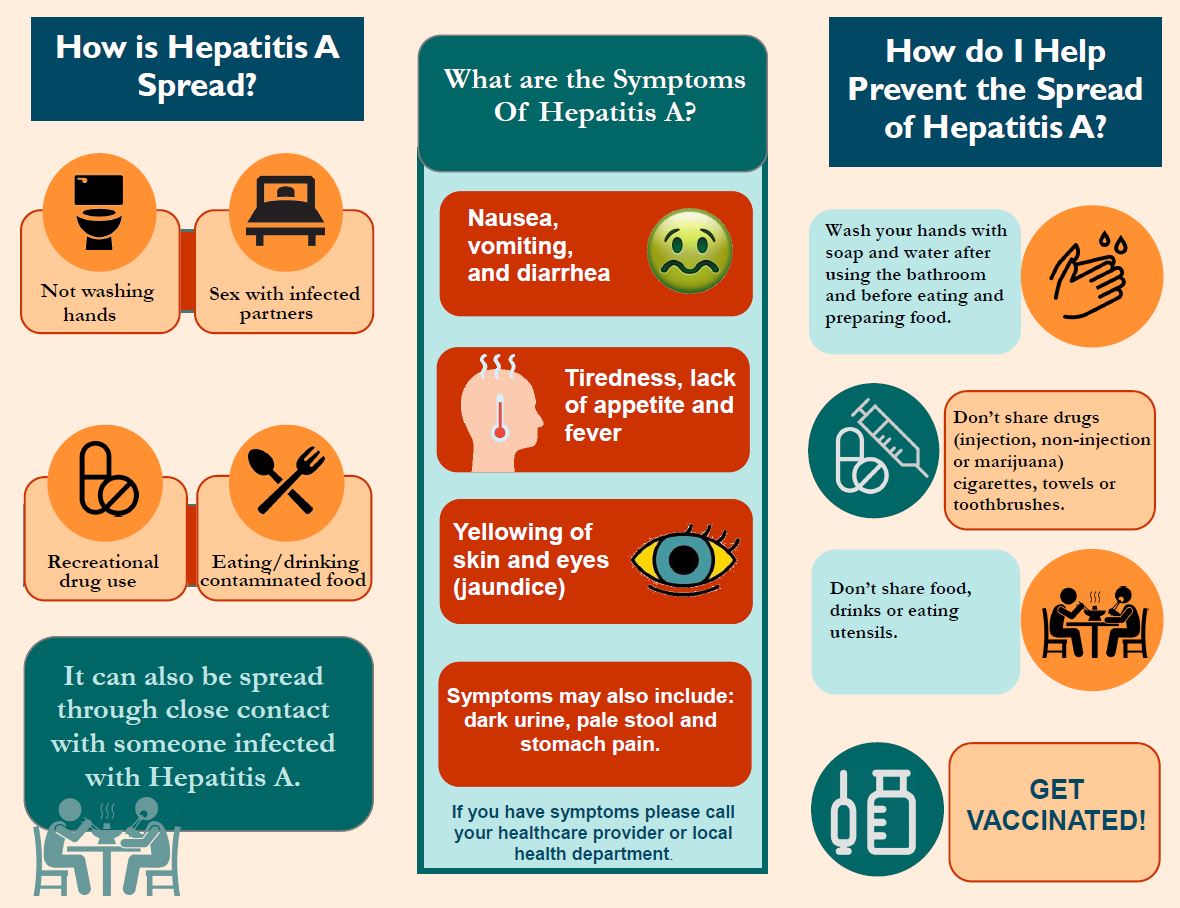 Some people only experience an acute illness, after which the body clears the virus. Like hepatitis B, acute hepatitis C can last from weeks to months.
Some people only experience an acute illness, after which the body clears the virus. Like hepatitis B, acute hepatitis C can last from weeks to months.
More than half of people with hepatitis C develop a chronic form of the disease. Many people with chronic hepatitis C don’t have symptoms, while some may have nonspecific symptoms like fatigue or feelings of depression.
People with chronic hepatitis C can eventually develop cirrhosis or liver cancer. This often takes many years to happen. Some factors that can put you at increased risk for developing cirrhosis include:
- being over 50 years old
- being male
- drinking alcohol
- taking immunosuppressive medications
- having another type of liver disease
What are the risk factors?
The following groups are at increased risk for contracting hepatitis C:
- injectable drug users
- people living with HIV
- infants born to mothers with HCV
- those with an increased risk for occupational exposure to HCV, such as healthcare workers
- people who’ve received dialysis
- people who received a blood transfusion or an organ transplant prior to 1992
- those who’ve received clotting factors before 1987
How is it treated?
Effective antiviral drugs are available for people with HCV.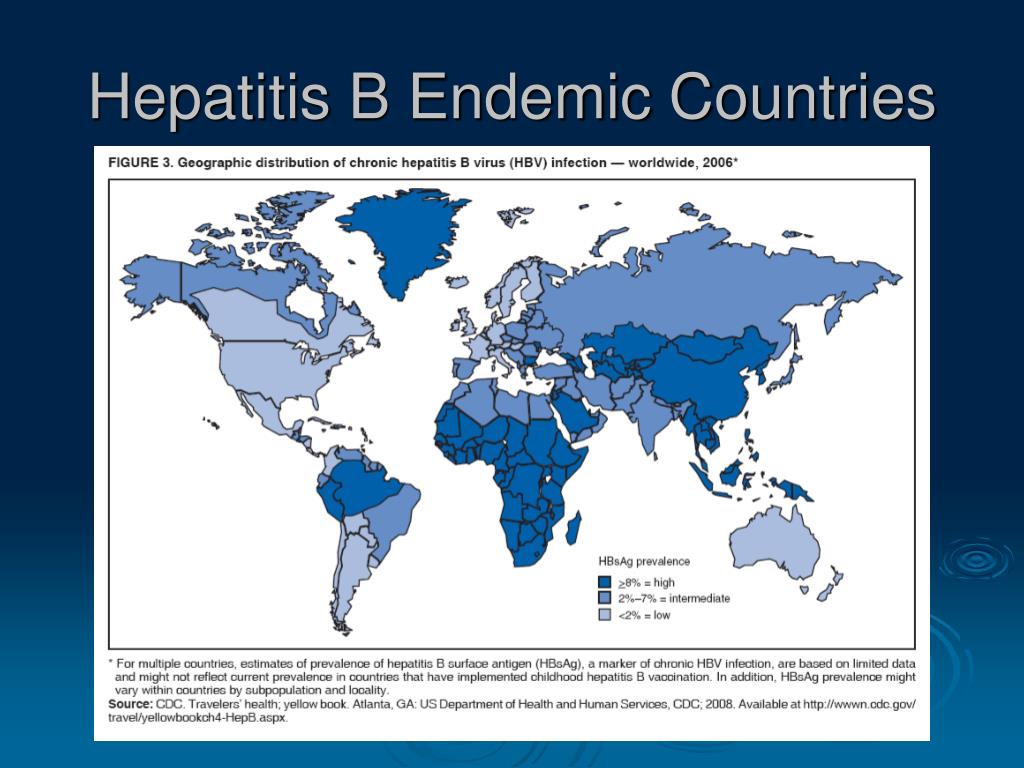 Currently, the same antiviral drugs are recommended for both acute and chronic hepatitis C.
Currently, the same antiviral drugs are recommended for both acute and chronic hepatitis C.
A course of antiviral therapy for HCV typically includes 8 to 12 weeks of oral medication. A few examples of antiviral drugs used to treat hepatitis C include:
- daclatasvir (Daklinza)
- elbasvir/grazoprevir (Zepatier)
- ledipasvir/sofosbuvir (Harvoni)
- simeprevir (Olysio)
- sofosbuvir (Sovaldi)
It’s estimated that over 90 percent of people with HCV can be cleared of the virus with a course of antiviral drugs. However, it’s still possible to contract HCV again after you’ve completed treatment.
There’s currently no vaccine for HCV.
What is the outlook?
Some people with hepatitis C will have an acute illness that resolves on its own. However, most people develop chronic hepatitis C.
Regardless of whether it’s acute or chronic, hepatitis C is treatable with antiviral drugs. Early diagnosis and treatment are important to prevent liver damage from occurring.
The CDC reports that about 2.4 million people in the United States were living with chronic hepatitis C from 2013 to 2016. Chronic hepatitis C contributed to 15,713 deaths in the United States in 2018.
Finding help for hepatitis
If you’ve been diagnosed with viral hepatitis, there are a variety of resources that are available to help you. Let’s explore a few of them below:
- Your doctor. Your doctor is a great first point of contact for questions and concerns. They can help you to better understand the type of hepatitis you have, as well as how it will be treated.
- American Liver Foundation (ALF). ALF is dedicated to ending liver disease through education, research, and advocacy. Their site has educational material about viral hepatitis, as well as ways to find doctors, support groups, and clinical trials in your area.
- Patient assistance programs. If you have hepatitis C, the cost of antiviral drugs can be high.
 The good news is that many drug manufacturers have patient assistance programs that can help you pay for these medications.
The good news is that many drug manufacturers have patient assistance programs that can help you pay for these medications.
Was this helpful?
The chart below is an at-a-glance summary of some of the key differences between hepatitis A, B, and C.
| Hepatitis A | Hepatitis B | Hepatitis C | |
|---|---|---|---|
| Transmission | mainly fecal-oral | contact with blood and other bodily fluids that contain HBV | contact with blood that contains HCV |
| Incubation period | 15–50 days | 60–150 days | 14–84 days |
| Acute vs. chronic | acute only | can be acute or chronic; most adults clear the virus, but children who contract HBV are more likely to have chronic hepatitis B | can be acute or chronic; over half of people that contract the virus will develop a chronic hepatitis C |
| Treatment | supportive care | acute: supportive care; chronic: antiviral drugs may be used | a course of antiviral drugs, which can clear the virus in most people |
| Vaccine available? | yes | yes | no |
The takeaway
Hepatitis is a condition that causes your liver to become inflamed. Hepatitis A, B, and C are all caused by different viruses.
Hepatitis A, B, and C are all caused by different viruses.
While these three viruses can cause similar symptoms, they differ in several ways, including how they’re transmitted and treated. Additionally, hepatitis A only causes an acute illness while hepatitis B and C can become chronic.
Contracting viral hepatitis can potentially lead to liver damage. See your doctor if you believe you’ve been exposed to a hepatitis virus or if you have symptoms of hepatitis.
Treatment of hepatitis C in Moscow – prices at the clinic “Medline-Service”
Hepatitis C with genotype 1 is considered the most aggressive type of the disease, which very quickly flows into a chronic form. The disease is excessively resistant to therapy with antiviral and interferon drugs, so this type of hepatitis C is difficult to treat and prone to frequent relapses. Treatment of hepatitis C with genotype 1 is carried out under the strict supervision of a physician.
Hepatitis C genotype 1: features and subtypes
The first genotype has three subtypes:
- 1a;
- 1b;
- 1c.

The hepatitis C virus with genotype 1 rapidly mutates and mutates, has increased resistance to the body’s immune functions and ongoing antiviral therapy. Treatment of hepatitis with genotype 1b is the most difficult and unpredictable. The fact is that this subtype in most cases rapidly flows into a chronic form, leading to serious complications, such as:
- fibrosis;
- cirrhosis;
- oncology.
In 80% of cases, subtype 1c is diagnosed in patients who received a blood transfusion. Even after the successful completion of treatment 1b, the risks of an early relapse cannot be ruled out.
The disease proceeds in several stages, each of which is manifested by specific and nonspecific symptoms:
- Sharp. It is characterized by the rapid progression of the inflammatory process in the tissues of the organ and can last about six months. The symptomatic picture can be blurred or acute, manifested by such symptoms: fever, nausea, jaundice, pain in the hypochondrium on the right.

- Carriage. It also happens that after the penetration of the RNA virus into the body, infection does not occur. In such situations, the virus in the blood is identified, but infection does not occur and pathological symptoms are completely absent. The carrier does not get sick, but can infect other people.
- Latent. Destructive processes in the liver tissues are progressing, but there are no pronounced symptoms.
- Clinical. The most difficult period of the disease, in which the virus manifests itself as actively as possible, provoking a sharp deterioration in the condition and the development of such pathological symptoms as: nausea with frequent bouts of vomiting, rapid weight loss, fatigue, weakness.
Patients with the clinical phase require emergency hospitalization, as they require specific treatment under the strict supervision of a specialist.
Treatment of genotype 1 hepatitis
Hepatitis C with genotype 1 is difficult to treat conservatively. The effectiveness of treatment depends on various factors:
The effectiveness of treatment depends on various factors:
- the degree of neglect of the pathology;
- viral load level;
- adequacy of selected therapy;
- Compliance with physician requirements.
The treatment regimen for this form of hepatitis involves the use of such combinations of medications:
- Sofosbuvir – Ribavirin – Peginterferon. The duration of treatment is on average 3 months.
- “Sofosbuvir” – “Ledipasvir” (“Daklatavir” or “Velpatasvir”). The duration of treatment is more than twelve weeks.
May 19 – International Hepatitis Day
(Kazan, May 19, Tatar-inform). Today is International Hepatitis Day, declared by the World Hepatitis Alliance, which brings together more than 200 hepatitis associations around the world. On a global scale, this day is celebrated for the second year in a row, the press service of the Ministry of Health of the Republic of Tatarstan reports.
The international campaign is designed to raise awareness of the world community about the problem of the spread of viral hepatitis. According to experts, so far the recognition of the seriousness of this problem at the state level cannot be compared with the level of awareness about HIV / AIDS, despite the fact that the number of infected people and the death rate for these diseases are approximately the same.
The World Health Organization (WHO) defines hepatitis as inflammation of the liver, most commonly caused by a viral infection. There are five main hepatitis viruses, called types A, B, C, D, and E. Symptoms of hepatitis include jaundice (yellowing of the skin and eyes), dark urine, extreme fatigue, nausea, vomiting, and abdominal pain.
Hepatitis A and E are usually caused by contaminated food and water. Hepatitis B, C, and D usually develops as a result of parenteral contact with infected body fluids (for example, blood transfusions or invasive medical procedures using contaminated equipment). Hepatitis B is also transmitted through sexual contact.
Hepatitis B is also transmitted through sexual contact.
Hepatitis B is the most severe type of viral hepatitis. It is no coincidence that hepatitis B is called the “silent killer”, since it occurs almost imperceptibly, but often leads to fatal consequences. Thus, the hepatitis B virus is 100 times more infectious than the HIV virus and is the second most common cause of malignant tumors in the human body after smoking.
Hepatitis B is a widespread infectious disease characterized by damage to the liver. The disease can occur as an acute or chronic infection. The chronic form of infection is the most common variant of the course of hepatitis B. Acute hepatitis B is often (at 85-90 percent of cases) ends with recovery. In 10 percent of those with acute hepatitis B, the infection becomes chronic.
According to WHO, about two billion people in the world are infected with the hepatitis B virus, and about 350 million people have a chronic infection. An estimated 600,000 people die every year from acute or chronic hepatitis B.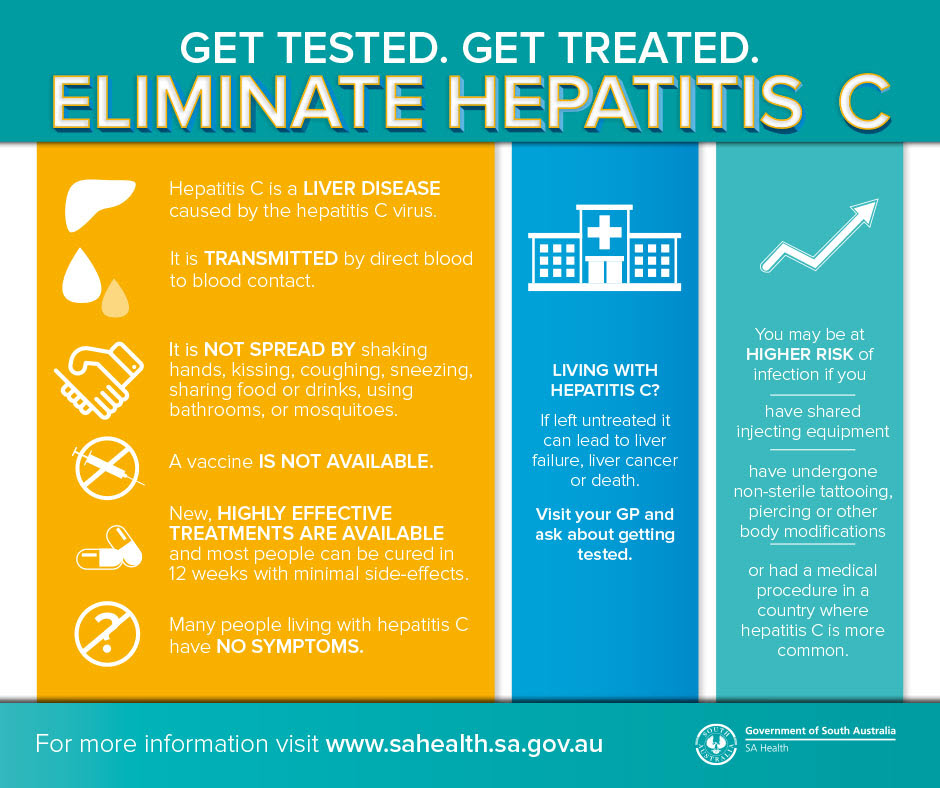 About 25 percent of adults chronically infected in childhood later die from cancer or cirrhosis (scarring) of the liver resulting from chronic infection.
About 25 percent of adults chronically infected in childhood later die from cancer or cirrhosis (scarring) of the liver resulting from chronic infection.
Currently, in many developed countries (eg, Western Europe and North America), the majority of infections are transmitted among young people through sexual intercourse and injecting drug use. In addition, the risk of infection with this dreaded virus is one of the main occupational risks associated with infection for healthcare workers.
The main method of preventing hepatitis B is vaccination of infants. This vaccine may be given as three or four separate doses as part of existing routine immunization schedules. After a full series of vaccines, more than 95 percent of infants, children and young adults develop protective levels of antibodies.
According to Rospotrebnadzor, the most important political and organizational event over the past three years, which had a significant impact on improving the health of the population, was the implementation of a national health project in terms of mass additional immunization of the population, in particular against viral hepatitis B.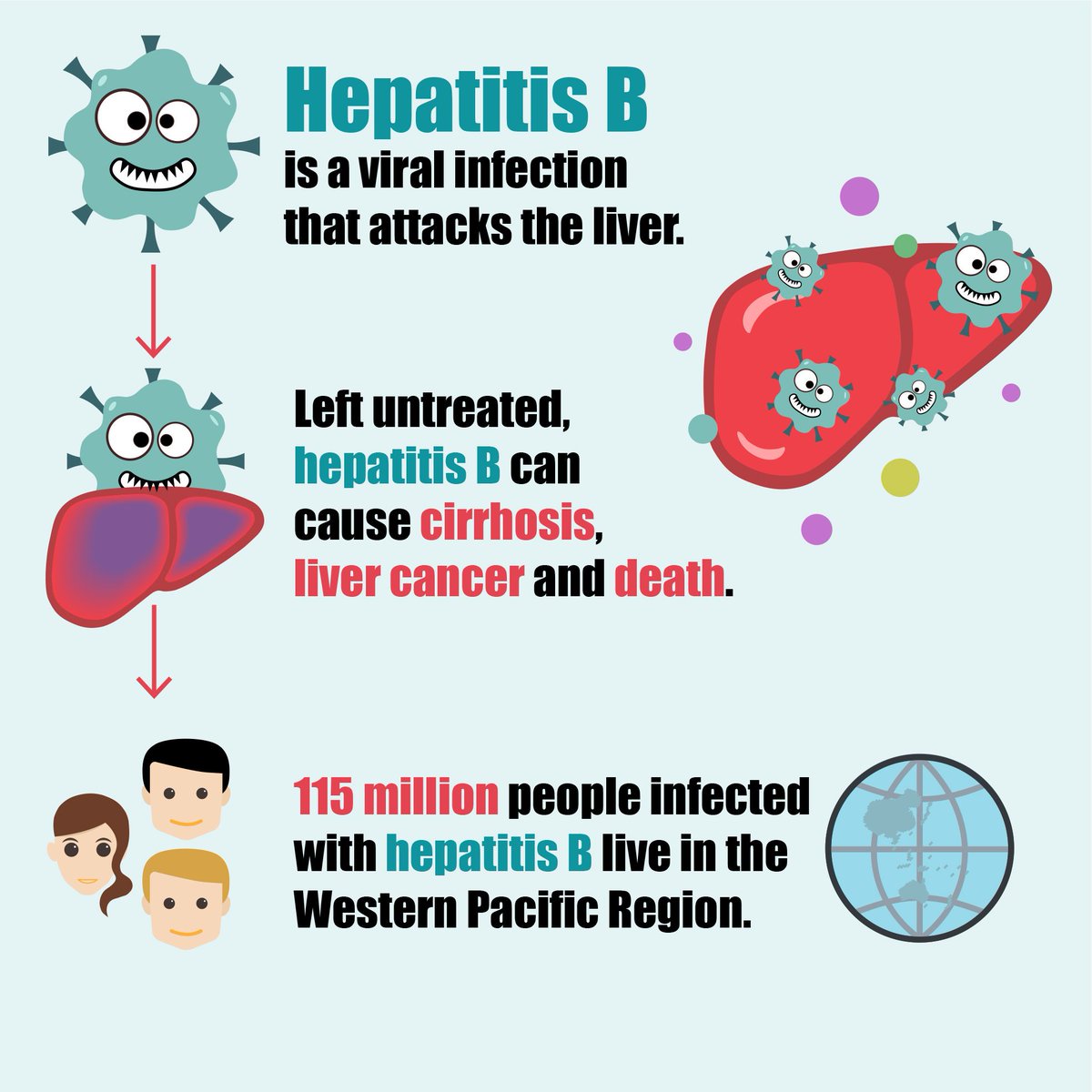
The goals of additional immunization of the population in 2006-2008. There was a three-fold decrease in the incidence of viral hepatitis B. To achieve the goals set during this period, additionally vaccinated against viral hepatitis B about 29million children, adolescents and adults aged 18 to 55 who have not been ill or previously vaccinated.
Carrying out additional immunization against hepatitis B within the framework of the national project “Health” during 2006-2008. made it possible to achieve a 2.1-fold decrease in the incidence in the country compared to 2005, and 4.2 times among children under the age of 14 years. In 38 regions of Russia last year, the incidence of acute hepatitis B was less than three cases per 100,000 population.
This year it is planned to vaccinate about 6 million adults aged 18-55 in our country, and to complete the immunization 9million people who did not receive vaccinations in a timely manner in 2008 due to delays in the delivery of vaccines by foreign manufacturers.

 The good news is that many drug manufacturers have patient assistance programs that can help you pay for these medications.
The good news is that many drug manufacturers have patient assistance programs that can help you pay for these medications.